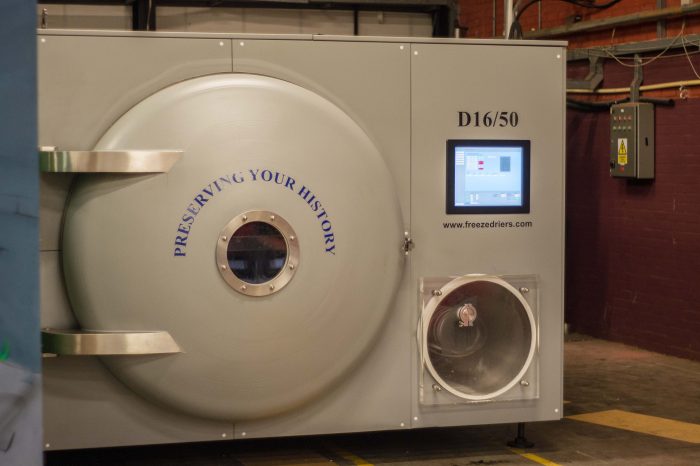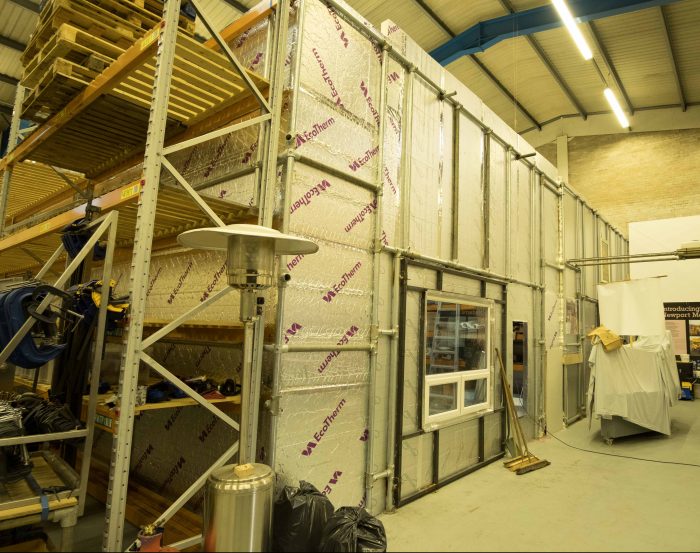Preservation & Storage
Freeze Drying
Even after the PEG process had been completed there was still the question of drying out the timber so that it could be kept outside the water permanently. Now with 540 year old timber, this is not a case of just leaving it outside in the sun, if there is any, the water has to be removed in a very precise and controlled way, enter freeze drying.
Have you ever noticed if you leave food uncovered in the fridge or freezer it will dry out and become hard? That’s because the water has evaporated from the food and dried it, freeze frying works in a similar way.
Originally invented to dehydrate perishable items and make them easier to transport and it works by bringing the temperature of timber to -50°C, to put this in perspective your freezer is probably around -20°C right now. This causes the water inside the timber to freeze with the pressure reduced to about 0.1 atmospheres over a long period of time the timber inside the inner chamber is warmed in a near vacuum.
As the water melts it does not turn into a liquid, which could damage the timbers, but instead goes straight into a gas by a process called sublimation. By repeating this process several hundred times you can control the rate at which the timber dries and ensure that the correct moisture level is maintained, it is estimated that by following this process the Ship’s timbers will be stable for at least the next 500 years if stored correctly.
Most of the freeze drying was carried out by the York Archaeological Trust and by the Mary Rose Trust, to whom we are most grateful. The complete operation called for transport to and from York and Portsmouth in large lorries carrying a hundred or so timbers each, and involving careful handling using fork-lift trucks.
Storage
The timbers are now in the purpose-designed stores where the humidity and temperature are controlled to optimum conditions.


